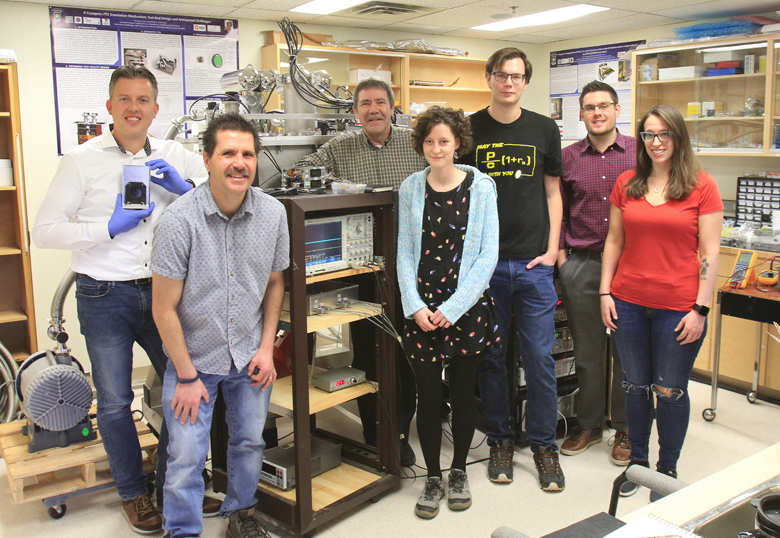The University of Lethbridge’s Astronomical Instrumentation Group (AIG) is celebrating two recent victories, one technical and one personal.

When Ian Veenendaal, a doctoral student studying under physics professor Dr. David Naylor, first started collaborating with the Netherlands Institute for Space Research (SRON) and Cardiff University on a Fabry-Pérot etalon (an instrument that measures the wavelengths of light) two years ago, he didn’t imagine it would one day lead to a job offer. As soon as he finishes his PhD thesis, which he expects will be sometime next summer, he’ll become an instrument scientist with SRON.
“It’s like a dream come true,” he says. “My goal since I started in physics was to work with some space agency and it came through.”
Veenendaal was collaborating with SRON on the design of the Fabry-Pérot etalon, which was designed, produced and tested by SRON before being brought to the U of L for testing in the cryogenic testing facility during the last week of November. The etalon had to be cooled to 4 Kelvin and then tested to see if it would operate in such cold temperatures. Turning an instrument on for the first time is called seeing first light and, in this case, the instrument performed exactly as it should.
“There’s nothing like it,” says Veenendaal. “When you see that first little spike in the signal that you expected to see, that your math and computer models tell you should be there, it’s confirmation that the hundreds of pieces of the puzzle fit together properly. There’s both a sense of accomplishment and relief.”
The etalon was accompanied by Dr. Ir. Willem Jellema, a senior instrument scientist and project lead with SRON and assistant professor at the Kapteyn Astronomical Institute at the University of Groningen. He was accompanied by Carolien Feenstra, a master’s student at the university, who started working on the project as an undergraduate.
“It’s the equivalent of a tuning fork, an optical tuning fork,” says Jellema. “The device we built filters out one specific colour of light and rejects all the other ones. That way, by tilting it, we can actually tune selected different colours of light and analyze them at very high fidelity.”
“It’s been a great week,” says Dr. David Naylor, a U of L physics professor. “There’s an army of talented people behind this. It’s been a fantastic collaboration, all funded on our part by the Canadian Space Agency (CSA). It’s a really important first. No one has made this kind of etalon before.”
The etalon is roughly five centimetres in diameter and so precisely flat that, if it was expanded to the size of Henderson Lake, the surface from one end to the other would not deviate by more than half a centimetre.
“That was key to the success,” says Jellema. “We had to etch and polish multiple layers of essentially solar-panel material to perfection and there is actually no one who can easily do this. It’s state-of-the-art processing capability at SRON and the NOVA optical infrared group, and maybe even in the world. That’s the expertise we could bring into this project.”
Funding for the collaboration was provided by a CSA Flights and Fieldwork for the Advancement of Science and Technology (FAST) grant and through SPICA-Safari funding from SRON and a Leids Kerkhoven-Bosscha Fonds (LKBF) subsidy from the Leiden Observatory. A member of the FAST collaboration, Professor Peter Ade from the School of Physics and Astronomy at Cardiff University, provided critical band limiting cryogenic filters.
The device has been a stepping stone to building an even better device that could very well be included in a NASA space mission in the future. It could also eventually fly in the SPICA mission as a calibration source component or as part of a high-altitude balloon project by CNES, the French space agency, above Australia and Canada.
